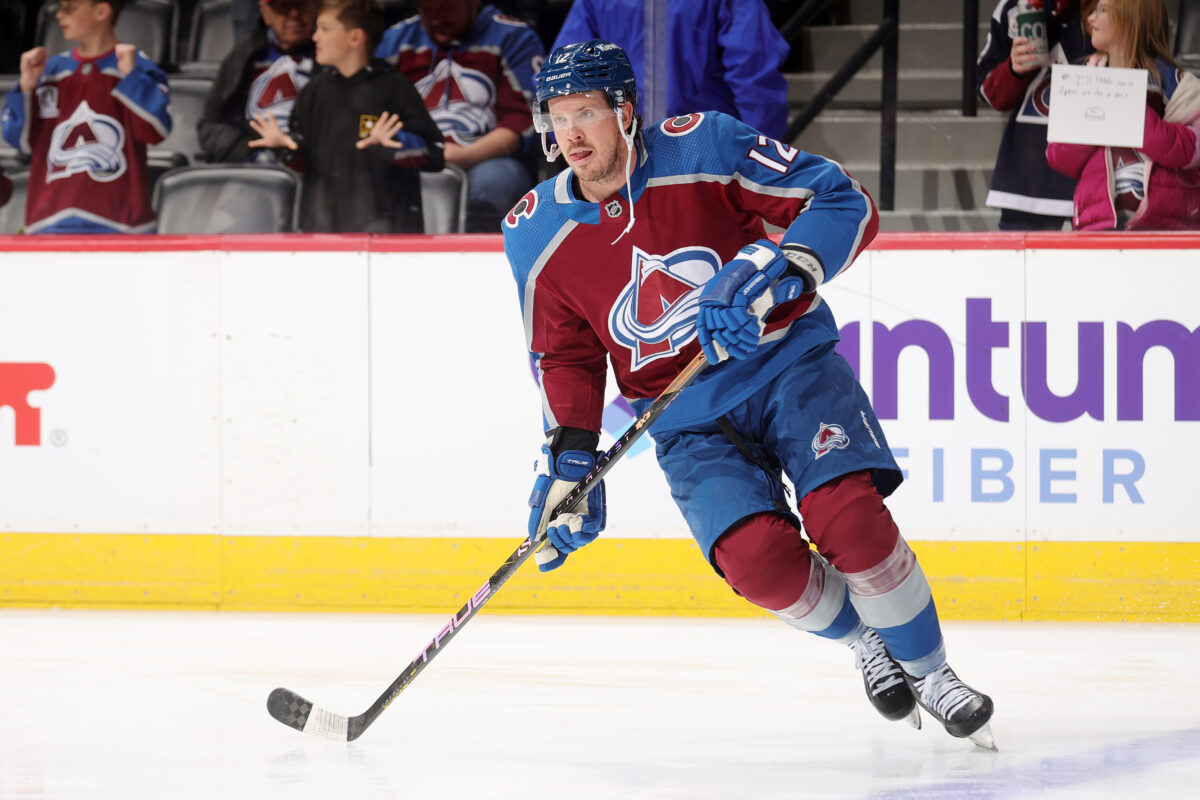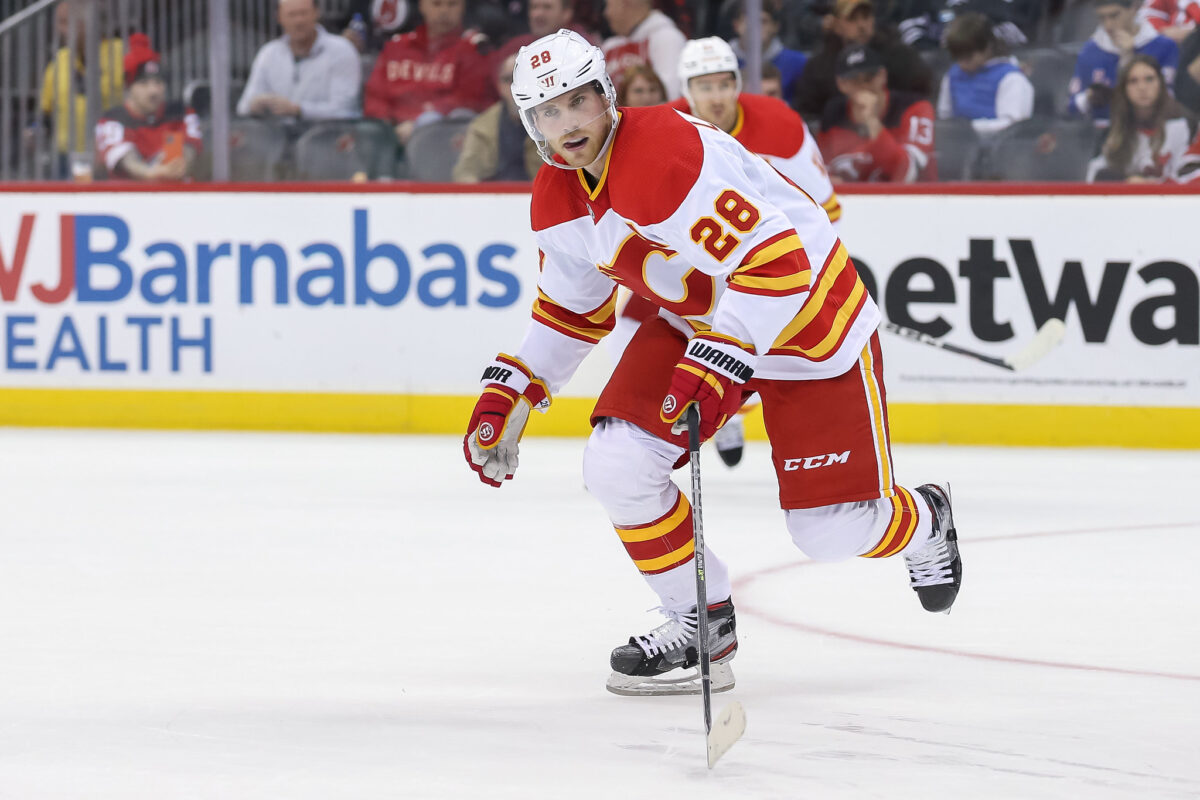When the Colorado Avalanche acquired veteran center Ryan Johansen in a trade with the Nashville Predators this past offseason, the organization hoped that the hole at second-line center had finally been filled for the first time since Nazem Kadri left as a free agent during the 2022 offseason.
Instead, Johansen’s gradual drop in production and similarly declining usage after a hot start to his NHL tenure has caused questions about the roster to resurface, particularly as it pertains to adding another top-six center.
Let’s dive into how the 31-year-old has seen his role with the team diminish only two months into the season, and how his stagnating offensive production could force general manager Chris MacFarland to make a move sooner rather than later.
Johansen Cooling Off After Hot Start
Johansen started his Avalanche tenure by making a strong first impression on the offensive side of the puck. He tallied four goals and five points in the team’s first nine games and averaged 2.78 shots per game (fourth among Colorado’s forwards) while averaging 16:21 per game in all situations (ninth among all Avalanche skaters).
For an older pivot coming off of a disappointing 12-goal, 28-point campaign with the Predators (in 55 games) partly due to injury, that type of immediate return should have been a good omen for things to come. Instead, Johansen has seen his offence dry up and his usage and deployment take a hit since the end of October, putting his role with the club in both the short- and long-term into question.

In 20 games since the start of November, Johansen has only scored five goals and six points, essentially halving his per-game rate of production from the first month of the season. He’s also only managed 23 shots in the last 20 games (1.15 per game), a sharp reduction in shot generation that isn’t completely explained away by his drop in usage.
Head coach Jared Bednar has gradually demonstrated less confidence in his new center, playing him just over 13 minutes per game since Nov. 1 (14th among Avalanche skaters). Johansen has received only 2:24 per game on the power play since Nov. 1 (fifth among Avalanche forwards), down from the 4:47 per game he was seeing through October (second among the team’s skaters).
Johansen has also gone from sixth among Avalanche forwards in even-strength ice time to ninth over that time frame, with Jonathan Drouin and Tomas Tatar acting as his most common linemates at five-on-five this season.
You may also like:
- Colorado Avalanche Won’t Be Contenders This Season
- Colorado Avalanche Lineup Projection for 2024-25
- Avalanche Giving Nikolai Kovalenko a Chance to Prove Himself
- 3 Avalanche Players With the Most to Prove in 2024-25
- Peter “Foppa” Forsberg: A Biography
It’s telling that, despite being in a much more favourable offensive environment this season, Johansen’s underlying chance generation has also dipped. He’s created scoring chances and high-danger opportunities at a less frequent clip at five-on-five than in his last injury-marred campaign with the Predators. His five-on-five possession numbers have also hovered at below 50% all season, meaning that the Avalanche are being out-shot and out-chanced when he takes the ice.
Simply put, the scales have been tilted in favor of the Avalanche’s opponents when Johansen is manning the middle. For a team where the superstars in Nathan MacKinnon, Cale Makar, and Mikko Rantanen do so much of the heavy lifting, reliable support pieces are crucial in ensuring the club is deep enough to make a deep run in the playoffs. If Johansen isn’t up to the task, finding a replacement – internal or otherwise – may be required.
Colton Seeing Increased Role Within Top-Six Forward Group
While Johansen has seen both his role and production reduced in recent weeks, it’s another offseason acquisition who has reaped the resulting benefits. 27-year-old Ross Colton – acquired from the Tampa Bay Lightning this past summer – lost the initial battle for the de-facto second-line center spot, but has grown in stature since the start of the regular season.
Colton only tallied two goals and three points in nine games during October, playing just over 13 minutes a night in all situations, including 1:34 per game on the power play (seventh among Avalanche forwards).
While Colton continues to see around the same usage with the man advantage even after Artturi Lehkonen suffered a significant injury, it’s his deployment at even strength that’s observed the greatest change since the start of November.
Bednar has handed the center 12:07 per game at that game state, ranking fifth among all Avalanche forwards in that time. Collectively, Colton is getting 13:47 per night in all situations since Nov. 1, slightly more than Johansen and slightly more than his even-strength usage in October.
Colton has also formed one-third of arguably the Avalanche’s best regular line, something that’s been even more important due to a rash of injuries across the lineup. Along with Miles Wood and Logan O’Connor, the trio has played over 138 minutes together at five-on-five and accounted for over 65% of the available expected goals (xGF%), the highest share among qualified Avalanche forward lines (minimum 50 minutes played). They have won the actual goals battle to boot, outscoring their competition 6-3 to give Colorado positive minutes behind the MacKinnon line.
Working in Johansen’s favor is that he has Colton cleanly beat in one area: faceoffs. Johansen ranks ninth in the NHL in total faceoffs taken since making his debut in the 2011-12 season, and his career win rate of 53.5% puts him just inside the top 50 of all qualified skaters in that span (minimum 1,000 draws taken). He sits within the top 30 among all skaters by faceoffs taken again this season, and his 56% success rate is 22nd in the league.
Colton is a respectable 51.9% in the dot for his career and won 56.1% of his draws just last season, but the older Johansen has a much longer track record of excellence in that area. For all of the criticism levied at Johansen, he deserves to be recognized for his work in an area that the Avalanche have struggled with historically, ranking 25th in the NHL across the Bednar era (since 2016-17).
Avalanche Have Several Top-Six Center Trade Targets
While Colton has flashed the ability to step up in a pinch, it’s hard to believe that Bednar, MacFarland, and the rest of the Avalanche front office wouldn’t appreciate having another bonafide top-six option to count on while building towards what should hopefully be another lengthy playoff run. It’s early, but the NHL’s list of top trade targets is already solidifying.
The Calgary Flames have sputtered for a second consecutive campaign and sit on the wrong side of the wildcard threshold in the Western Conference. Elias Lindholm (18 points in 29 games) is a pending unrestricted free agent (UFA) and carries a cap hit of $4.875 million this year, making him the top target by value and affordability. If the Flames fall even further back of the playoff pace, expect a fire sale come March (no pun intended).

Adam Henrique (12 points in 26 games, $5.825 million cap hit) and Sean Monahan (16 points in 28 games, $1.985 million cap hit) are two other targets who are both pending UFAs and play on teams who could be swayed into parlaying them into assets for their ongoing rebuilds.
One dark-horse target is Steven Stamkos, the long-time captain of the Lightning and someone who has publicly voiced his frustration regarding contract talks with general manager Julian BriseBois. I’ll admit that this one seems the most unlikely, but the Lightning currently sit 11th in the Eastern Conference by points percentage (PTS%) and may be hesitant to commit to a player on the wrong side of 30 with a notable injury history. Could we see a redux of the Ray Bourque experience, albeit without the stakes of a first-ever Stanley Cup on the line?
Avalanche Have Time to Assess Roster Before Trade Deadline
The NHL hasn’t even turned the page on 2023 just yet, so the field of viable trade targets is sure to grow before the trade deadline (March 8). Don’t expect much movement before then, but don’t be surprised if the organization decides to make a splash ahead of time with an eye towards building chemistry well before the stakes are elevated.
The Avalanche currently lead the Central Division with a record of 17-9-2 so they haven’t exactly struggled despite the uncertainty at the center position. Still, addressing the gap at some point is a must, especially as they did not do so last season. Every franchise has a limited contention window, and MacKinnon, Rantanen, and Makar won’t play at an elite level forever. It’s time to capitalize – hopefully, MacFarland and company feel the same.
Data courtesy of Evolving Hockey, Natural Stat Trick, and the NHL.
